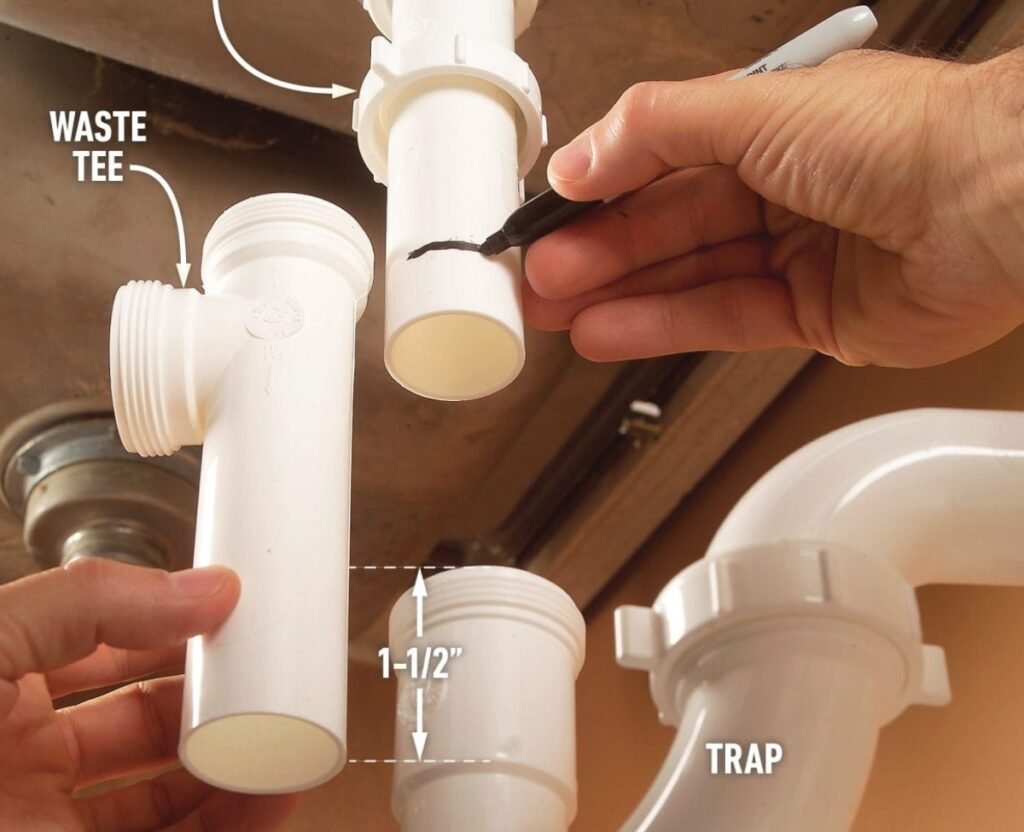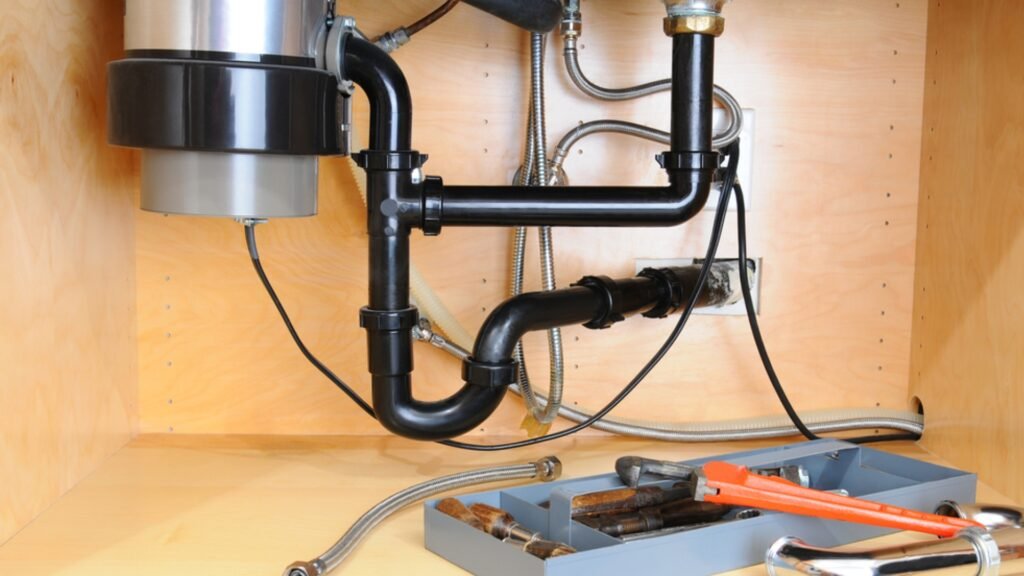Under-sink pipes are the unsung heroes of household plumbing, connecting sinks to drainage or water supply systems. Neglecting their care can lead to clogs, unpleasant odors, or even costly damage. Regular attention, like cleaning and inspections, keeps these hidden systems efficient and problem-free.
Studies suggest that poor maintenance of under-sink pipes is a common cause of plumbing failures in households. Research highlights that regular inspections reduce the risk of leaks by up to 30%. Experts recommend using natural cleansers, like vinegar and hot water, to prevent clogs without harming the pipes. These findings emphasize how consistent, simple upkeep can avoid hefty repair bills and ensure long-lasting performance.
Imagine opening your sink cabinet to find puddles or unpleasant smells. These can turn into major issues if ignored. Giving your pipes a little care saves you time, money, and stress. It’s not just about avoiding damage—it’s about keeping your home safe, clean, and comfortable. By committing to simple habits, you preserve the unseen yet critical system that supports your daily life.
This guide covers every essential aspect of under-sink pipes—types, maintenance, common issues, and solutions. You’ll walk away with actionable knowledge to keep your plumbing in top condition and avoid costly repairs.
Types of Under-Sink Pipes
Understanding the materials used for under-sink pipes is key to better maintenance and decision-making. Each type has unique benefits and drawbacks depending on the purpose and location of installation.
PVC Pipes
PVC (polyvinyl chloride) pipes are a popular choice under sinks. Lightweight and easy to install, PVC pipes resist corrosion and are highly cost-effective.
Advantages
- Affordable
- Durable against standard use
- Smooth interior prevents clogs
Drawbacks
- Not ideal for hot water; can warp over time
- Limited strength compared to metal pipes
Best for: Drainage under kitchen or bathroom sinks.
PEX Pipes
PEX (cross-linked polyethylene) has become a standard in modern plumbing. This flexible plastic tubing is used for water supply lines under sinks.
Advantages
- Usable for both hot and cold water
- Flexible, making it suitable for tight spaces
- Resistant to freezing and cracking
Copper Pipes
Copper pipes have been used for decades in plumbing. Their durability and resistance to contamination make them an excellent choice for waterlines.
Advantages
- Long-lasting and recyclable
- Handles high water pressure
- Corrosion-resistant
Drawbacks
- High cost
- Requires professional installation due to soldering
Best for: High-pressure water supply or premium plumbing systems.
ABS Pipes
ABS (acrylonitrile butadiene styrene) is a rigid plastic pipe often used for drainage.
Advantages
Strong and performs well in cold temperatures
Easier to work with compared to PVC (no primer needed)
Drawbacks
- Loud due to a lack of sound-dampening
- Limited resistance to high temperatures
Best for: Cold-weather drainage lines under sinks.

Maintenance of Under-Sink Pipes
Proper maintenance prevents major issues and prolongs the lifespan of your plumbing system. Small steps taken regularly ensure that your pipes function correctly.
Daily Tasks
- Dispose of grease and food scraps properly.
Monthly Checks
- Inspect pipes for leaks or damp areas under the sink.
- Clean P-traps to remove buildup. The P-trap holds standing water to block sewer gas, so keeping it unobstructed is essential.
- Flush the drain with vinegar and boiling water to dissolve organic material and prevent clogs.
Annual Maintenance
- Perform a full inspection of water supply lines, including shutoff valves. Replace worn-out washers and seals.
- Ensure connections between pipes are secure and free from rust or wear, especially for metal pipes.
Pro Tips for Maintenance
- Avoid using chemical drain cleaners. While effective on clogs, they can erode pipes over time.
- Secure under-sink pipes with brackets to prevent strain that might lead to misalignment or leaks.
Common Issues With Under-Sink Pipes
Even with proper maintenance, plumbing systems experience wear and tear over time. Understanding common issues helps you address problems promptly.
Leaky Pipes
Signs
- Puddles under the sink
- Stains or damp spots on the cabinet floor
Causes
- Loose connections at joints
- Cracked or corroded pipes
- Worn washers or seals in shutoff valves
Solutions
- Tighten loose connections or replace cracked components.
- Use plumber’s tape on threaded connections to ensure a tight seal.
Clogged Pipes
Signs
- Slow water drainage
- Gurgling sounds from the drain
Causes
- Objects accidentally washed down
Solutions
- Remove and clean the P-trap.
- Use a manual plumbing snake or eco-friendly drain cleaner for deeper clogs.
Low Water Pressure
Signs
- Weak water flow from the faucet
Causes
- Clogged aerators or supply lines
- Leaks in water supply pipes
Solutions
- Clean or replace clogged aerators.
- Inspect supply lines for visible leaks and repair or replace them.
Odors From the Drain
Signs
- Persistent foul smell coming from the sink
Causes
- Clogged P-traps that trap debris rather than water
- Sewer gas is escaping into the space due to a dry trap
Solutions
- Clean the P-trap regularly.
- Pour water mixed with vinegar down the drain to eliminate odors.
Solutions for Complex Plumbing Problems
Some plumbing issues go beyond DIY solutions. When needed, contact a professional plumber to address these concerns.
Pipe Damage
Broken or cracked pipes require immediate replacement. Copper pipes can be soldered, but plastic pipes like PVC or ABS often need a full replacement section.
Backflow Prevention
Hire a plumber to install backflow preventers. These simple devices block wastewater from flowing into the clean water supply.
Preventative Measures You Can Take
Taking steps to prevent problems will save you time, stress, and money.
- Set Up Water Alarms: These devices alert you to leaks under the sink before water damage becomes significant.
- Insulate Pipes: Prevent freezing and bursting during the colder months by wrapping pipes in insulation material.
Conclusion
The neglect of under-sink pipes is all too common, given their hidden nature. Yet, these unseen workhorses are pivotal to modern convenience and health. Regular maintenance not only preserves functionality—it also protects against expensive structural damage, health risks from mold, and contamination from leaks.
By making under-sink plumbing care a habit, you’re not just extending the lifecycle of your pipes—you’re safeguarding the comfort and safety of your home. A proactive approach now means fewer emergencies later, saving time, stress, and resources.
The plumbing underneath your sink is worth your attention and care. After all, proper maintenance changes a “hidden hassle” into a well-functioning and long-lasting system that supports your daily life.

